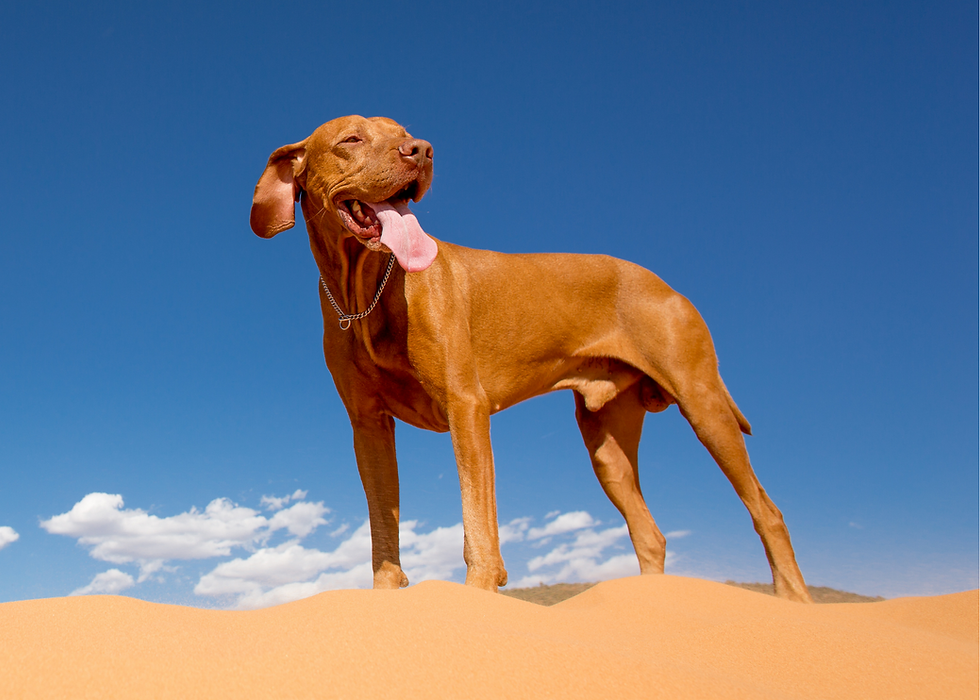
As the mercury climbs and ambient temperatures edge closer to a dog's internal thermostat, the challenge of staying cool becomes a formidable task. Dogs, relying predominantly on panting to dissipate heat, find themselves at the mercy of their surroundings. With each breath, they propel the cooler air through nasal passages, attempting to maintain a delicate balance in their body temperature.
Under normal circumstances, a dog's respiratory rate hovers between 20 to 30 breaths per minute. However, when engaged in panting, this rate can skyrocket to a staggering 200 to 400 breaths per minute. This rapid exchange of air becomes crucial in swiftly cooling the dog's body, provided there's ample access to fresh, open air. The absence of such conditions puts them at risk of overheating.
The transition from overheating to full-blown heatstroke can be alarmingly swift, turning it into a critical medical emergency. Recognizing the early signs is paramount, as prompt first aid and immediate veterinary attention can make all the difference. Before delving deeper into the intricacies of heatstroke and its connection to acupressure, let's acquaint ourselves with the telltale symptoms. Brace yourselves; we're about to explore the subtle indicators that could spell trouble for our canine companions.
Difference Between Overheating and Heatstroke
Heatstroke and overheating are related conditions, but they represent different degrees of severity in the body's response to excessive heat.
Overheating: Overheating is a milder condition where the body temperature rises beyond the normal range but has not yet reached a critical point. In dogs, overheating often occurs when they are unable to adequately cool themselves through panting, especially in hot and humid conditions. While overheating can cause discomfort, it doesn't always lead to the more severe consequences associated with heatstroke.
Heatstroke: Heatstroke, on the other hand, is a more severe and potentially life-threatening condition. It occurs when the body's cooling mechanisms fail, and the core body temperature rises to dangerous levels. This failure in the cooling process can be due to prolonged exposure to high temperatures, strenuous physical activity in hot weather, or inadequate access to water and shade. Heatstroke can lead to organ failure, damage to internal organs, and, if not treated promptly, it can be fatal.
In summary, overheating is an initial stage where the body temperature is elevated but hasn't yet reached a critical level. If not addressed, overheating can progress to heatstroke, a serious medical emergency characterized by a dangerously high core body temperature and systemic complications. It's crucial to recognize the signs of overheating early on and take preventive measures to avoid the escalation to heatstroke.
Main Symptoms of Heatstroke
When a dog is experiencing heatstroke, there are several noticeable symptoms that serve as crucial indicators of the severity of the condition. Being vigilant and recognizing these signs is imperative for prompt intervention. Here's an elaboration on the main symptoms of heatstroke:
Muscle Tremors: Heatstroke can lead to involuntary muscle contractions, resulting in noticeable tremors or shivering. This is a physical manifestation of the body's struggle to regulate its temperature.
Rectal Temperature Exceeding 104º: Monitoring the dog's rectal temperature is a key diagnostic measure. A core body temperature surpassing 104º Fahrenheit is indicative of a significant rise, signaling a potential progression towards heatstroke.
Paled or Red-Colored Gums: Changes in the coloration of the gums can be indicative of circulatory issues associated with heatstroke. Gums may appear either pale or, conversely, take on a red hue due to increased blood flow and dilation of blood vessels.
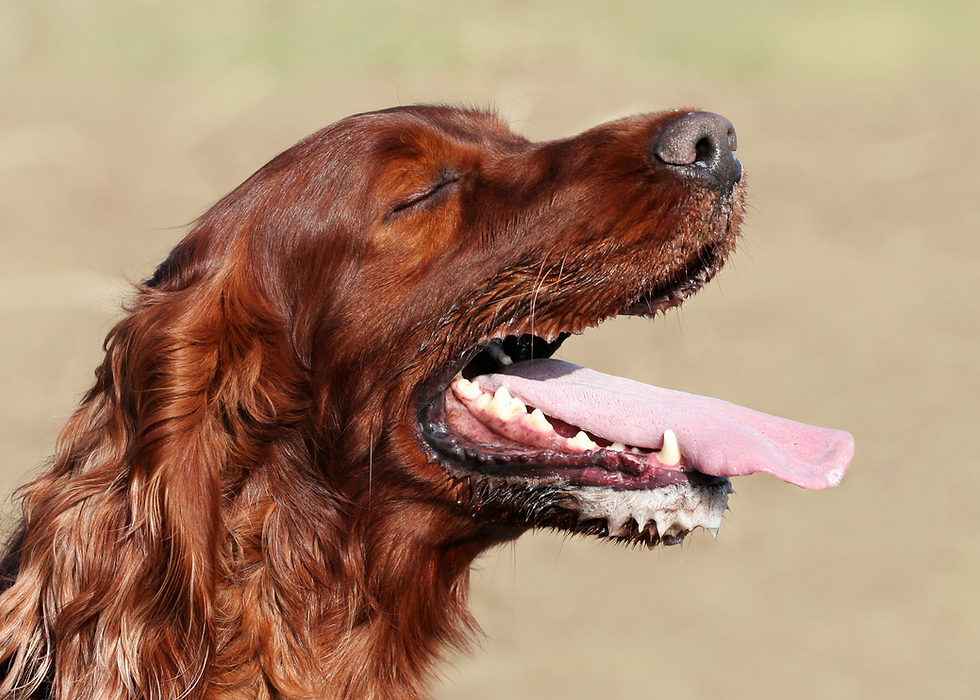
Rapid Panting and Breathing: While dogs naturally pant to cool themselves, during heatstroke, this panting becomes exaggerated and rapid. The respiratory rate can become dangerously high as the body attempts to expel excess heat.
Thickened Saliva and Excess Salivation: The consistency of saliva may change during heatstroke, becoming thicker. Excessive salivation is also common and may be a result of the increased respiratory effort or dehydration.
Staggering:A dog suffering from heatstroke may exhibit an unsteady gait or staggering. This is a consequence of the overall physiological distress caused by the elevation of body temperature and the impact on the nervous system.
Recognizing these symptoms collectively is crucial in identifying the onset of heatstroke. If any of these signs are observed, immediate action, including moving the dog to a cooler environment, providing water, and seeking veterinary assistance, is essential to prevent further escalation of the condition and mitigate potential long-term consequences.
Other Signs of Danger
Heat stroke generally occurs when your dog's body can no longer efficiently control its heat on its own. Indicators also tend to follow some progression, usually from mild to more severe:
Vomiting
Weakness
Agitation
Elevated heart rate
Frantic, loud panting
Loss of balance
Collapse
Loss of consciousness
Diarrhea
Dark purple gums
Dogs That are High Risk of Heatstroke
In the realm of canine health, understanding the diverse vulnerabilities among our four-legged companions is paramount. Not all dogs face the same level of risk when it comes to the formidable threat of heatstroke. Certain breeds and individual factors contribute to an elevated susceptibility, necessitating heightened awareness and proactive measures to ensure their well-being in warm environments. In this section, we delve into the distinctive categories of canines that demand extra vigilance and care under the sun. From brachycephalic breeds to those with thick coats, identifying and addressing the specific needs of these high-risk dogs becomes an essential aspect of responsible pet ownership. Let's navigate the nuances of canine vulnerability and unveil the key players in this spectrum of heightened heat-related risks.
Your Pooch is a Brachy
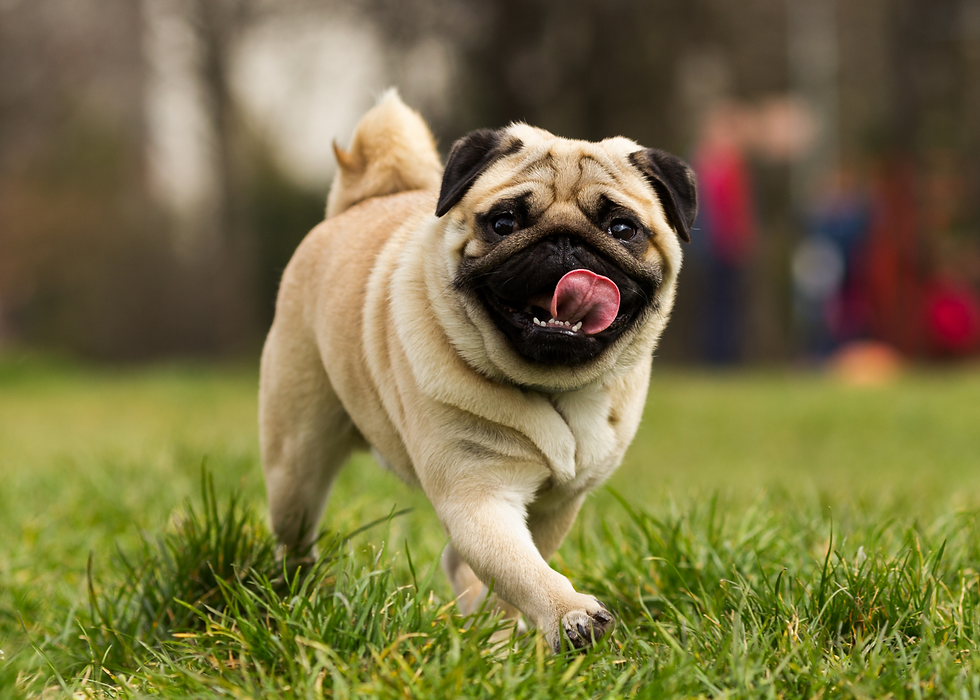
Your beloved furry companion may boast an irresistibly adorable face, but if they fall into the category of brachycephalic breeds, affectionately known as "brachys," there's an added layer of consideration when it comes to their well-being in warmer climes. Unlike their canine counterparts, dogs, in general, lack an extravagant cooling mechanism, and the absence of efficient sweat glands further complicates their ability to dissipate heat.
Brachycephalic breeds, exemplified by charming characters like Pekingese, Pugs, Bulldogs, Shih Tzus, and Boston Terriers, possess distinct facial structures—a short nose and a wide, flattened skull—that, while endearing, pose a challenge in regulating their body temperature. The compact arrangement of the tongue, cartilage, and soft tissues in their petite facial spaces restricts airflow significantly. Consequently, when the heat is on, their already compromised ability to breathe and pant becomes even more strained, making them particularly susceptible to the risks of heatstroke. As we navigate the intricacies of canine vulnerability, it becomes evident that behind those cute faces lies a unique set of challenges that demand our keen attention and specialized care.
Your Dog is High Energy
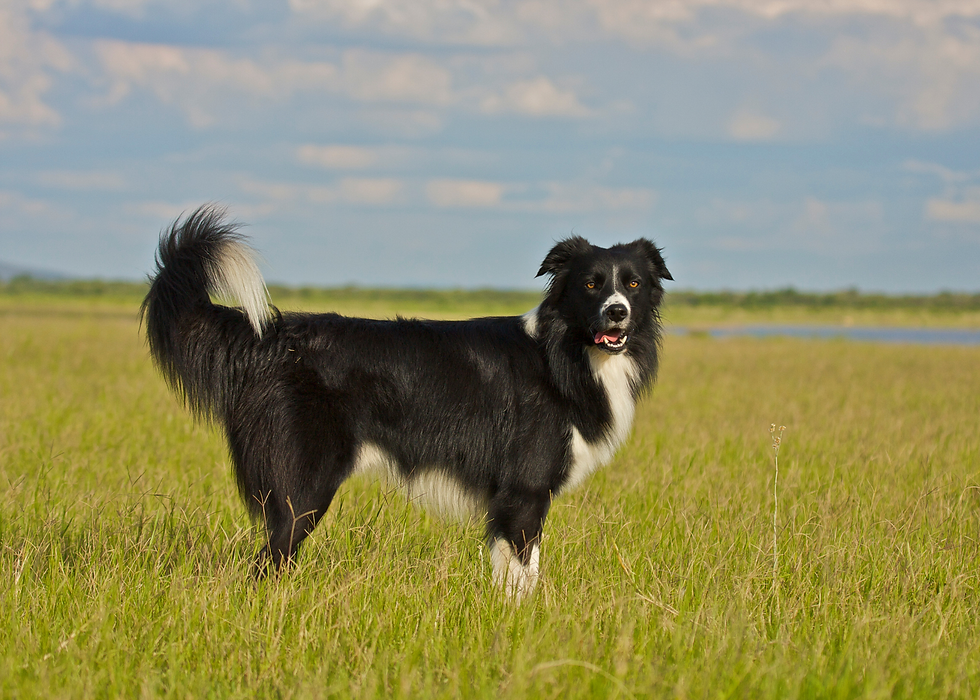
If your furry companion falls under the category of high-energy breeds, such as the industrious Border Collies, the affable Labs, or the spirited Golden Retrievers, you're likely well acquainted with their boundless enthusiasm for work and play. These working-class dogs are characterized by an unwavering dedication to tasks at hand, often pushing themselves to the limits without a discernible awareness of the rising temperature around them.
In the pursuit of their tasks, be it herding, retrieving, or other forms of engagement, they might be so absorbed that they remain oblivious to the subtle signs of overheating until they reach a critical point. It's a testament to their robust work ethic that, at times, these passionate animals will persist in their activities until they physically can't continue any longer. For pet owners of such high-energy breeds, a vigilant eye and proactive monitoring become crucial, ensuring that the fine line between dedicated work and potential overheating is carefully navigated. Understanding the unique characteristics of these breeds sheds light on the importance of responsible care, ensuring that their fervor for activity doesn't inadvertently lead them into the perilous territory of heat-related issues.
Your Pup is Pudgy
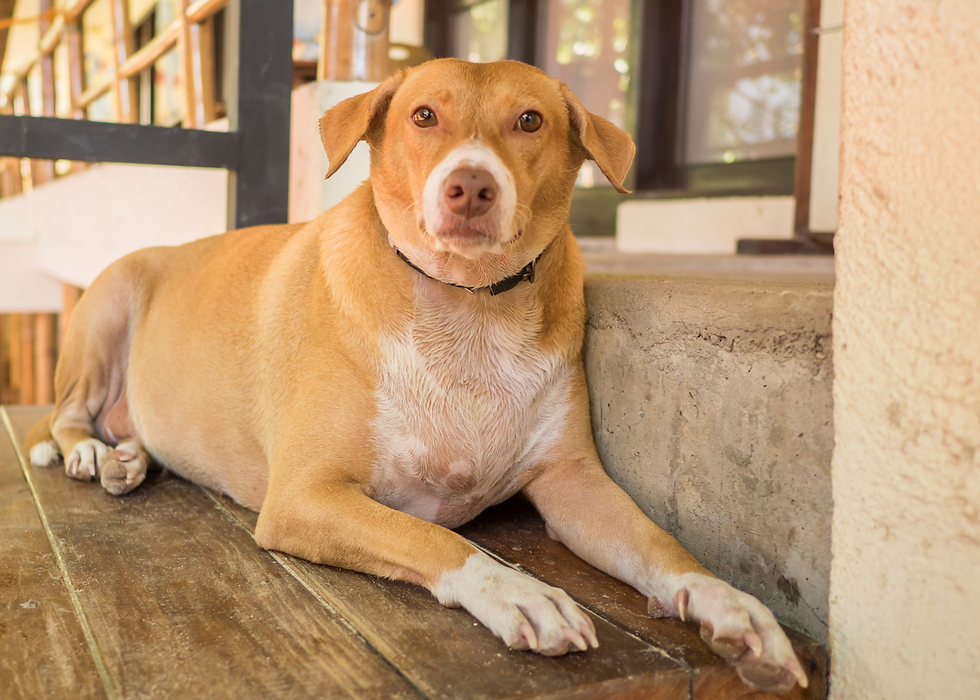
If your four-legged companion boasts a more robust physique, it's crucial to be especially mindful of the potential risks associated with heatstroke. Carrying a few extra pounds not only alters your dog's appearance but also significantly impacts their vulnerability to heat-related issues. Research on treating heatstroke has illuminated a concerning correlation, revealing that obesity substantially amplifies the risk of death, nearly tripling the stakes. The added layers of fat in overweight pups serve as an unintended form of insulation, hindering their natural ability to cool down efficiently. This insulation effect poses a formidable challenge, impeding the dissipation of excess heat and heightening the likelihood of succumbing to the adverse effects of elevated temperatures. Understanding the implications of weight on your pet's heat regulation underscores the importance of proactive measures, from maintaining a healthy diet to ensuring adequate hydration, in safeguarding your pudgy pal from the perils of heatstroke.
Outdoor Working Dogs
Dogs, often celebrated for their versatility and dedication in various roles, play crucial roles as outdoor working companions—be it in herding, hunting, or guarding. While these diligent canines excel in their assigned tasks, their occupational demands expose them to heightened risks during scorching weather conditions.

Outdoor working dogs, by the nature of their duties, spend extended periods outdoors. Whether herding livestock under the sun, tracking game in the wilderness, or standing guard in open spaces, their continuous exposure to the elements becomes a critical factor in their susceptibility to heat-related complications. The relentless heat, combined with their demanding tasks, can lead to rapid overheating if preventive measures are not in place.
The physical demands inherent in activities like herding, hunting, or guarding require a considerable expenditure of energy. Dogs tirelessly navigating varied terrains or maintaining a vigilant watch exert themselves intensely. This heightened physical activity, especially in hot conditions, accelerates their internal heat production, making them more prone to heat stress and exhaustion.
Other High Risk Dogs
Beyond brachycephalic breeds and high-energy dogs, several other factors and breeds can be considered high-risk when it comes to heat-related issues. Here are some additional categories of dogs that may be more susceptible to heatstroke:
Senior Dogs: Aging dogs may have reduced mobility and may be less efficient in regulating their body temperature. They are more prone to heat stress, and their overall health may be compromised.

Puppies: Young puppies are still developing their ability to regulate body temperature, making them more susceptible to heat-related complications.
Dark-Coated Breeds: Dogs with dark-colored fur absorb more heat from the sun, increasing their risk of overheating. Breeds such as Bulldogs, Pugs, and Boxers with dark coats may be more vulnerable.
Thick-Coated Breeds: Dogs with dense and insulating coats, such as Huskies, Malamutes, and Samoyeds, may struggle to dissipate heat effectively.
Overly Excitable or Anxious Dogs: Dogs with naturally anxious or excitable temperaments may be more prone to overexertion, leading to increased heat generation and a higher risk of heatstroke.
Dogs with Pre-existing Health Conditions: Dogs with respiratory or cardiovascular issues may have compromised abilities to cope with heat stress. Conditions like heart disease or respiratory disorders can exacerbate the impact of high temperatures.
It's important to note that individual factors, such as overall health, fitness level, and acclimatization to heat, also play a role in determining a dog's susceptibility. Regardless of the breed or category, all dogs should be carefully monitored in hot weather, and preventive measures should be taken to ensure their well-being. Providing access to shade, cool water, and avoiding strenuous activities during peak temperatures are key elements in preventing heat-related issues in dogs.
Beat the Heat — Prevention: Safeguarding Your Canine Companions
As the mercury rises, proactive prevention becomes paramount in protecting our furry friends from the perils of heatstroke. Here are essential tips to keep in mind and signs to watch for, ensuring the well-being of your beloved dogs:
Ample Access to Water: Guarantee that your dog has continuous access to water throughout their environment. Adequate hydration is the first line of defense against heat-related issues.

Cooling Measures: In non-emergency situations, employ various cooling techniques to regulate your dog's body temperature. Add ice to water bowls, dampen their chest, pads, or head with a wet cloth, and consider providing a kiddie pool filled with cool water for them to enjoy a refreshing dip.
Shade and Shelter: Avoid leaving your dog in sunny, hot areas devoid of shade for prolonged periods. Ensure they have access to shelter and shade to escape the direct heat of the sun.
Vigilance in Summer Months: Keep a watchful eye on your canine companion during the warmer months. Be attuned to warning signs such as excessive panting, lethargy, or distress, which may indicate the onset of heatstroke.
Kiddie Pool Oasis: Enhance their cooling options by providing a kiddie pool in the outdoor space. Dogs often revel in the joy of splashing around, and it serves as an effective means for them to cool off.
Timely Outdoor Activities: Schedule outdoor playtime during the cooler hours of the day, preferably in the morning or evening. Avoid strenuous activities during the peak heat, minimizing the risk of overheating.
Paw Protection: Hot surfaces, such as asphalt or concrete, can cause discomfort and even burns to your dog's paws. Opt for walks during cooler hours or on grassy surfaces. If you must walk on hot surfaces, consider protective booties for your dog.

Proper Grooming: Regular grooming, especially for dogs with thick coats, helps in maintaining optimal body temperature. Trimming excess fur can enhance heat dissipation, keeping your dog cooler.
Controlled Exercise: Monitor your dog's exercise regimen, ensuring it aligns with their fitness level and the prevailing temperature. Excessive physical exertion in the heat can escalate the risk of heatstroke.
Cooling Mats and Beds: Invest in cooling mats or beds designed for dogs. These items provide a cool surface for your dog to lie on, offering additional relief from the heat.
Recognize High-Risk Conditions: Be aware of environmental factors that may intensify the heat, such as high humidity. Dogs may struggle more in humid conditions, and precautions should be adjusted accordingly.
Car Safety: Never leave your dog unattended in a parked car, even with windows cracked. The temperature inside a car can skyrocket rapidly, leading to life-threatening consequences.
Hydration Monitoring: Pay attention to your dog's water intake. Increased activity levels or higher temperatures may necessitate more frequent water breaks.
Emergency Preparedness: Familiarize yourself with the signs of heatstroke and have an emergency plan in place. Quick action is crucial if you suspect your dog is experiencing heat-related distress.
By integrating these preventative measures into your routine, you not only enhance the quality of your dog's life but also establish a robust defense against the potentially harmful effects of excessive heat. A vigilant and caring approach ensures that your canine companions can enjoy the warmer seasons safely, thriving in an environment that prioritizes their well-being.
Role of Acupressure — Cooling Session
In the realm of holistic pet care, acupressure emerges as a gentle yet powerful tool to enhance a dog's ability to regulate body temperature, making it a valuable adjunct in the prevention of heat-related issues. Specific acupressure points strategically located on the dog's body play a pivotal role in optimizing their heat-releasing mechanisms. It's essential to approach acupressure as a proactive and preventive care option, ideally incorporated into your routine to support your dog's overall well-being.

Acupoints Boosting Respiratory System: Certain acupressure points are renowned for their efficacy in supporting the respiratory system, a key player in a dog's heat dissipation process. By stimulating these points, acupressure facilitates improved lung function, enhancing the dog's ability to engage in effective panting—a natural cooling mechanism. This not only aids in releasing heat from the body but also promotes optimal oxygen exchange, contributing to overall respiratory health.
Assisting Panting for Heat Release: Acupressure focuses on specific points that directly assist in facilitating panting, a primary means through which dogs regulate their body temperature. By targeting these acupoints, you amplify the efficiency of panting, ensuring a more rapid expulsion of excess heat. This targeted approach aligns with the dog's natural cooling mechanisms, fostering a harmonious balance in their thermoregulatory processes.
General Capacity to Expel Heat: Beyond the respiratory system, acupressure works on a holistic level to enhance the body's overall capacity to expel heat. By promoting the balance of vital energy (Qi) and optimizing the flow of blood and fluids, acupressure supports the body's inherent ability to maintain a cool and comfortable temperature. This holistic approach is especially beneficial in preventing the accumulation of heat that could lead to distressing conditions such as heatstroke.
A Cautionary Note: It's crucial to exercise caution when applying acupressure, especially during moments of distress. While acupressure serves as a powerful preventive care measure, refrain from using these points if your dog is already showing signs of distress or discomfort. In such cases, prompt veterinary attention is paramount.
Acupressure You can Do at Home
Use these points every day to support the body's natural ability to heal itself. You can hold each point 30-45 seconds with gentle finger pressure or gently massage the space with your fingers. Again, do not use acupressure if you pet is experiencing distress.
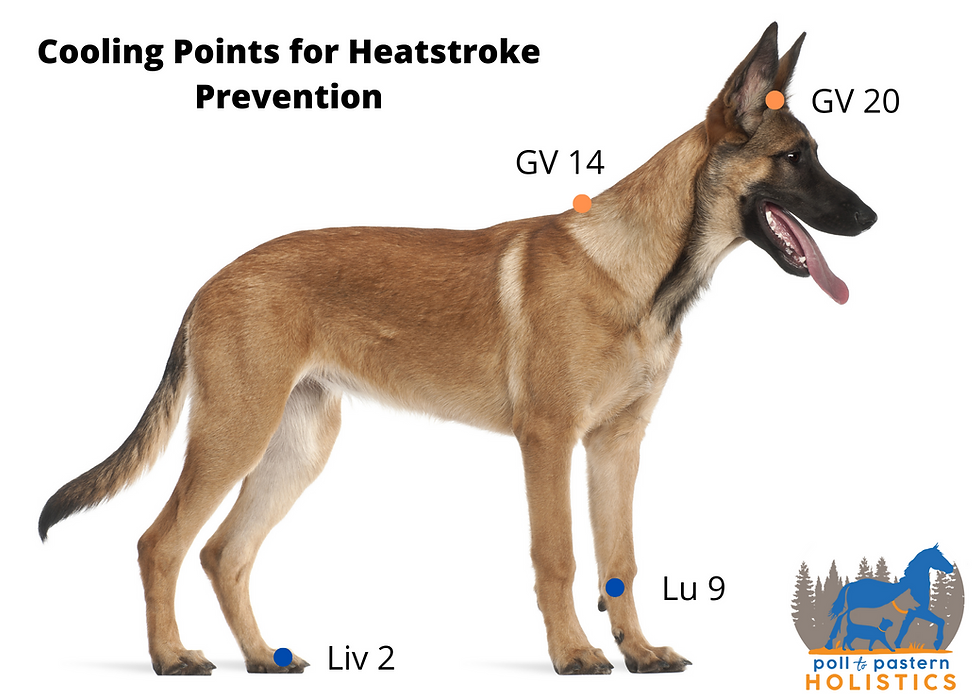
Governing Vessel 14
This acupoint is located on the dorsal midline of the dog at the neck base in front of the shoulder blades (scapula). This acupoint supports the respiratory system quite efficiently while also boosting the body's capacity to expel heat. It is used to clear all the heat from the whole body and prevent heatstroke.
Governing Vessel 20
GV20 is located at the dog's head top on the midline, almost between his ears. It has the ability of clearing all the extra heat, thus assisting the dog in releasing much internal heat. Moreover, it also calms the mind of the dog and helps reduce the anxiety in the dog.
Liver 2
Liver 2 is actually on the hind paws, on the webbing between the third and second digits on the paw top. (Note: On the hind leg, the dew claw is considered the first digit whether it's there or not.) This point is found on both sides of the body. It is called acupoint for calming the heart and cooling blood heat.
Lung 9
This point is located on its forelimbs, right below the wrist on the medial side (inside leg). Lung 9 is a fundamental acupressure point supporting lung function that promotes the arteries' energy and clearing heat. It can highly benefit all dogs who suffer from any internal heat level.
Acupressure Classes
Interested in learning more about acupressure? Come join us for an acupressure class with your dog! Sign up for our monthly newsletter to learn about upcoming classes! There are so many points that can benefit you dog and support their natural immune system, digestive system, emotional behaviors, and more!
Or, get your dog on a routine acupressure session program! Your dog will enjoy acupressure sessions with our Nationally Certified Animal Acupressure Practitioner. Sessions are calming and rejuvenating! Your dog will feel their best when they are supported by acupressure. We serve the Greater Charlotte Area, but can travel.
Conclusion: Keeping Cool Paws and Warm Hearts
As we wrap up our exploration into the critical realm of heatstroke prevention for our beloved canine companions, we're reminded that the summer sun need not cast a shadow on our furry friends' well-being. Armed with knowledge, vigilance, and a touch of holistic care, we pave the way for a season filled with joy, play, and shared moments.
From the enthusiastic high-energy breeds to the endearing brachys and diligent outdoor workers, each dog is unique, and so are their needs in the heat. We've delved into the nuances of prevention, from providing ample shade and hydration to the therapeutic benefits of acupressure. Our guide aims not only to equip you with practical strategies but to foster a deeper understanding of your dog's distinct vulnerabilities.
As the thermometer climbs, let's commit to a summer of responsible play, mindful monitoring, and a collective dedication to the well-being of our furry companions. Whether they are cooling off in a kiddie pool, enjoying the benefits of acupressure, or simply basking in the shade, may their tails wag freely, and their hearts beat with the rhythm of a safe and happy summer.
Cheers to cool paws, warm hearts, and the unwavering bond between us and our cherished canine family members. Stay cool, stay informed, and, most importantly, let the summer adventures with your furry friends continue to flourish!

